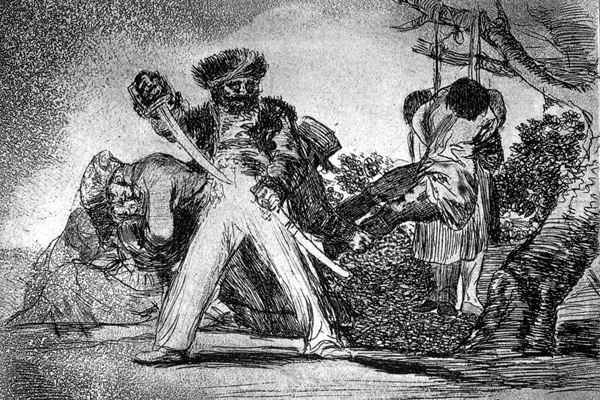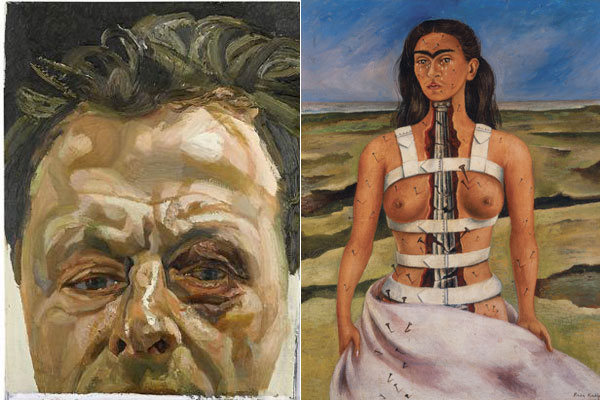
Just the other day, a newly discovered painting (above left) by reclusive English modern master, Lucian Freud, was unveiled before heading to auction. Like so much of Freud’s work, the piece exalts in the rheumy yellows, reds, and purples of human flesh that most painters avoid. Unlike other Freud examples, though, this one gives a peek into the secretive artist’s life — in this case, through a self portrait that documenting the aftermath of a violent run-in Freud had with a taxi driver and the big, fat black eye the painter took home. This got us to thinking — if there’s one thing artist’s love to catalog, it’s themselves (they are always available for sittings after all) and if there’s one thing that is always telling and compelling, it’s a portrait of the artist in pain.
Compared to his peers, Freud was lucky to walk away from a black eye. Frida Kahlo suffered a horrible series of injuries during a streetcar accident. The constant pain and disability because a running theme in her many, many self portraits, particularly the wince-inducing “The Broken Column” (1944, above right), which features a look at the artist’s injured spine and represents her pain through dozens of nails driven into her flesh (ick).
Goya too was able to transmit his personal anguish through the paintbrush. In “Self Portrait with Dr. Arrieta” (1820, below left), we see the artist under the sometimes painful ministrations of his physician as he sits propped up on his deathbed. If Goya, a master of cataloging suffering, was even half as tortured as his work suggests, it’s a small miracle he was able to paint it at all. On a lighter note, Freud’s British contemporary, Francis Bacon’s “Self-Portrait with Injured Eye” (1972, below right), details the injury he suffered after a lover pushed the painter’s face through a window, almost destroying the artist’s sight (actually, that’s not lighter at all).
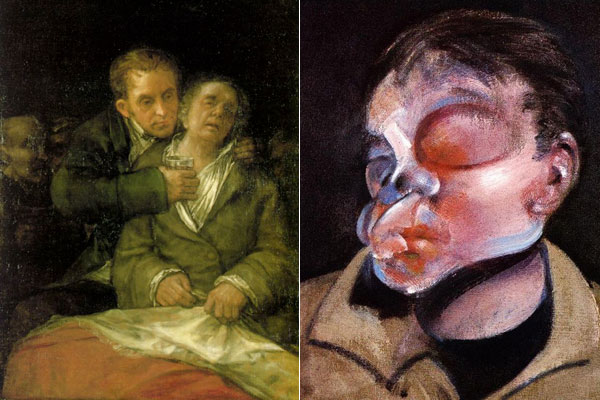
Vincent Van Gogh is perhaps the most famous self-mutilating artist of all time. Whether he cut off his own ear for the love of a prostitute or in a pique of simple madness, his self-portraits of his recuperation, swaddled and sullen as he appears in “Self-Portrait With Bandage” (1889, below left), are the stuff of legend. Close behind in the “danger to self” category is Marina Abramovic, the Russian-born, New York conceptual artist who has cut her hands, deprived herself of sleep, jumped into a pentagram of flaming fuel, and, in the case of “Rhythm 0” (1974, below right), let audience members abuse her with scissors and rose thorns. For more of her nasty stuff, be sure to check out her MoMA retrospective in March.
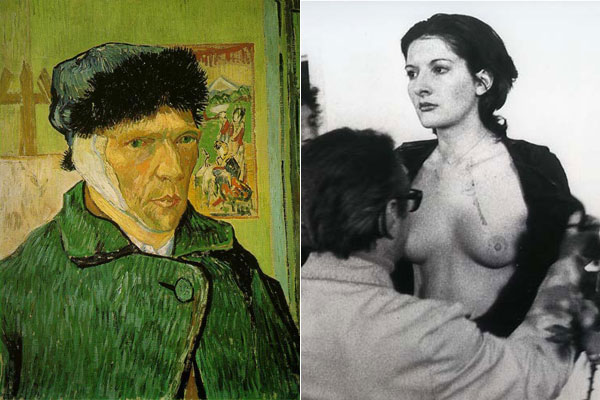
Andy Warhol was one of the most photographed artists ever. Even though Richard Aveodon’s 1969 shot of the scars left by surgery to save the Factory founder’s life (below left) after a failed assignation attempt doesn’t show Warhol’s face, it is perhaps the most personal, revealing, and famous image of him. Caravaggio went through several “sick” phases, first detailing a near-deadly illness with his “Sick Bacchus” (1593, below right).
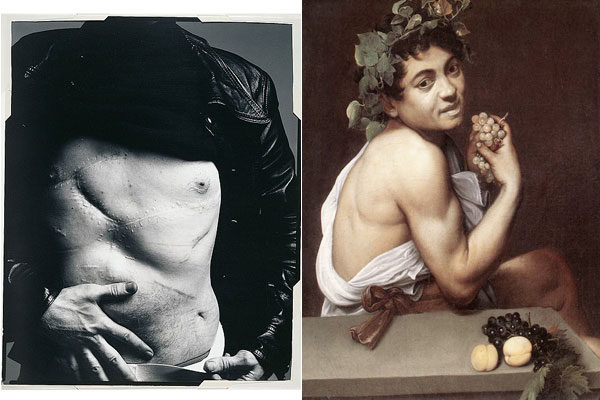
After years of self abuse and working his way toward the bottom of Roman society, the artist used his own visage again, this time standing in for the severed head of a biblical giant in his “David With The Head of Goliath” (c. 1610, below left). Notice what he decades have done to the once-youthful face as the slain Goliath’s mouth hangs open as if to say, “Oy vey iz mir.” Finally, the least dramatic, though perhaps most striking of this under-the-weather roundup is the simple “Self-Portrait” (1959, below right) by Sir Stanley Spencer. Painted soon after the artist learned he had terminal cancer, there is nothing outwardly wrong with Spencer, but his gaze, heavy with knowledge of his mortality, dares us to turn away and challenges us to confront our impermanence.
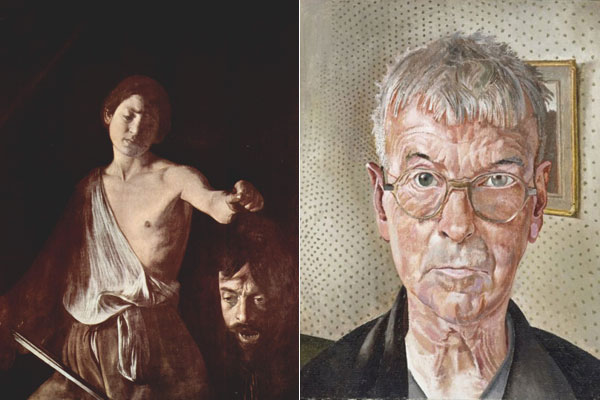
To walk in the often painful footsteps of Van Gogh, Caravaggio, and other artists, pre-order our “Art + Travel Europe: Step into the Lives of Five Famous Painters”. We promise it won’t hurt, much.
Tagged with: andy warhol Art Art + Travel Caravaggio francis beacon frida Frida Kahlo Goya lucian freud marina abromovic stanley spencer Van Gogh
 MUSEYON BOOKS Smart City Guides for Travel, History, Art and Film Lovers
MUSEYON BOOKS Smart City Guides for Travel, History, Art and Film Lovers
